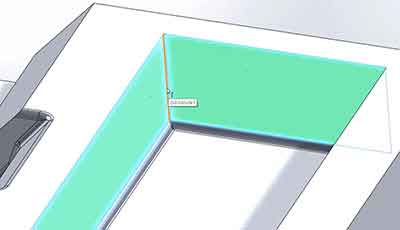At China Manufacturing Corp., we strive to meet two core customer expectations. First, your part should match your designs. Second, you should get it on time. That’s why size matters in sheet metal. Like the story of Goldilocks and the Three Bears, it’s easiest to manufacture parts that are just right: not too big, not too small. In fact, sheet metal size is one of the primary considerations when it comes to lowering lead times.
How Big is too Big in Sheet Metal?
If your proposed part is too large, it can be hard to manage, possibly requiring more than one person to move a sheet on and off the press, laser or punch machine. This is especially true of parts that are larger than 39” x 47” (a typical sheet is 40” x 48”).
As you can imagine, stabilizing heavy sheet metal is difficult, especially in a press brake. Not only does the awkwardness of these sheets mean that additional workers need to help, it also means that your lead times will increase, so it will take longer to get your part.
The Difficulties of Fabricating Small Sheet Metal Parts
Too big is an issue, but so is too small. In this case, however, a primary concern is safety. Press brakes and other machines use tons of force to create special features such as holes, slots, louvers and bends in sheet metal. Machinists typically use their hands to maintain the position of sheet metal objects, but with very small pieces that raises safety issues as their fingers would be much too close to the machine and the small part size makes it hard to maintain stability. In order to be safe and to get great results, parts we fabricate must be no smaller than 1.5” x 1.5” formed or .5” x .5” flat.
Following these guidelines will help you get your parts back faster, and may even save you some money. Check out the helpful advice in this video.
Related Videos
Easy Ways to Convert to Sheet Metal Friendly Designs
Three Things You Need to Know about Forming Sheet Metal
Why Tolerance Matters in Sheet Metal
For more great sheet metal design tips, download our Design for Manufacturing (DFM) Guide.





